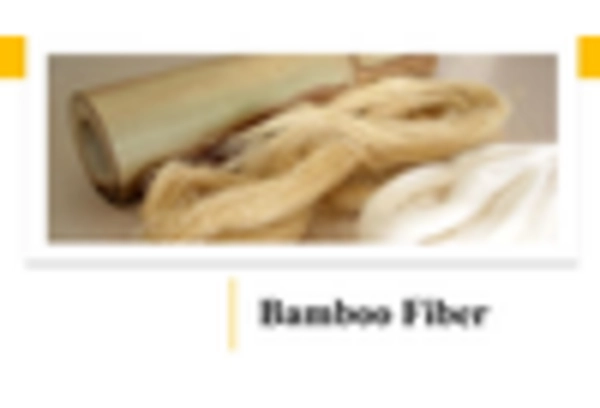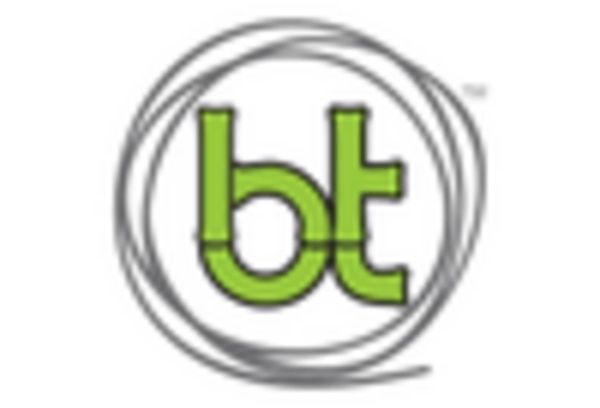Diverse Applications
The versatility of bamboo fibers is a notable driver for the Bamboo Fiber Market. These fibers are utilized in a wide range of applications, including textiles, home furnishings, and personal care products. The adaptability of bamboo fibers allows them to be blended with other materials, enhancing their functionality and appeal. As industries seek to diversify their product offerings, the demand for bamboo fibers is likely to rise. Market analysis suggests that the textile segment alone is expected to account for a substantial share of the bamboo fiber market, indicating a robust growth trajectory for the Bamboo Fiber Market across various sectors.
Sustainability Awareness
The increasing awareness regarding environmental sustainability appears to be a primary driver for the Bamboo Fiber Market. Consumers are becoming more conscious of their purchasing decisions, favoring products that are eco-friendly and sustainable. Bamboo, being a renewable resource that grows rapidly without the need for pesticides, aligns well with these consumer preferences. Reports indicate that the demand for sustainable textiles is projected to grow at a compound annual growth rate of approximately 9% over the next five years. This trend suggests that the Bamboo Fiber Market could experience substantial growth as manufacturers respond to the rising demand for sustainable materials in various sectors, including fashion and home textiles.
Technological Innovations
Technological advancements in fiber processing and manufacturing are driving the Bamboo Fiber Market forward. Innovations in extraction techniques have improved the quality and efficiency of bamboo fiber production, making it more competitive with traditional fibers. For instance, the development of eco-friendly processing methods has reduced the environmental impact associated with bamboo fiber production. As a result, manufacturers are increasingly adopting these technologies to enhance product quality and reduce costs. The market for technical textiles, which includes bamboo fibers, is projected to grow significantly, indicating that the Bamboo Fiber Market could see increased investment in innovative production technologies.
Health and Wellness Trends
The growing emphasis on health and wellness is influencing the Bamboo Fiber Market significantly. Bamboo fibers possess natural antibacterial properties, making them an attractive option for consumers seeking hygienic and safe textile solutions. The market for organic and natural fibers is expanding, with bamboo fibers being recognized for their hypoallergenic qualities. As consumers increasingly prioritize health-conscious products, the Bamboo Fiber Market is likely to benefit from this trend. Market data indicates that the organic textile market is expected to reach USD 25 billion by 2027, suggesting a favorable environment for bamboo fiber products that cater to health-oriented consumers.
Regulatory Support for Sustainable Practices
Regulatory frameworks promoting sustainable practices are emerging as a significant driver for the Bamboo Fiber Market. Governments are increasingly implementing policies that encourage the use of renewable resources and sustainable materials in manufacturing. This regulatory support is likely to create a favorable environment for bamboo fiber products, as manufacturers seek to comply with sustainability standards. Additionally, incentives for eco-friendly practices may further stimulate demand for bamboo fibers. Market projections indicate that the sustainable textile market could grow substantially, suggesting that the Bamboo Fiber Market is well-positioned to capitalize on these regulatory trends.


















Leave a Comment